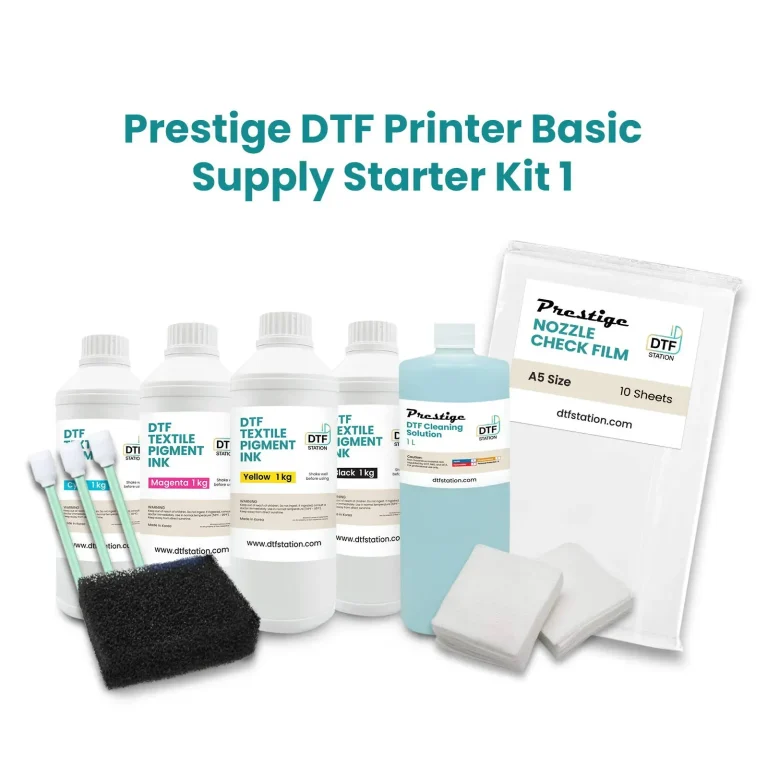DTF supplies comparison: inks, papers, printers explained
DTF supplies comparison is a hot topic for print shops and hobbyists alike as Direct-to-Film printing gains traction across apparel, mugs, and custom substrates. DTF inks are the color engine that determines vibrancy, durability, and how accurately artwork reproduces on a range of fabrics, films, and textures. In a complete setup, selecting the right DTF printers that pair well with inks and papers is essential for reliable color balance, smooth gradients, and consistent transfer quality. This introductory guide highlights what to look for in each component—inks, papers, and printers—and how their performance interlocks to deliver sharp images and vivid colors. By focusing on realistic cost per print, color handling, workflow compatibility, and vendor support, you can streamline your transfer process and avoid common pitfalls.
In other terms, the topic can be framed as a review of ink sets, media choices, and printing hardware that drive successful film-to-fabric results. From a semantic perspective, terms like ink system, media compatibility, and printer reliability are tightly linked to concepts such as color management, white-ink performance, and adhesive workflow in DTF transfer printing. Understanding these connections helps explain why choosing compatible inks, papers, and printers matters as a cohesive system. For those evaluating options, thinking in these related concepts can improve search visibility and decision accuracy. Ultimately, a well-structured purchasing plan considers ink chemistry, film characteristics, and machine support to optimize throughput and consistency.
DTF Supplies Comparison: Selecting Inks, Papers, and Printers for Superior DTF Transfer Printing
DTF supplies work best when inks, papers, and printers are treated as an integrated system. In a DTF transfer printing workflow, the color engine starts with DTF inks that deliver vibrant color reproduction, stable whites, and reliable performance across textiles and substrates. The choice of film, white ink opacity, and coating compatibility all influence edge crispness, color fidelity, and how well the final print survives washing and wear.
When evaluating a DTF supplies comparison, consider how each component affects the others. High-quality DTF inks paired with well-suited DTF papers can maximize color gamut, improve transfer reliability, and reduce reprints. Look for consistent batch-to-batch color, good durability, and clear vendor guidance on printer compatibility to ensure your investment supports efficient DTF transfer printing across your typical workload.
DTF Supplies Buying Guide: Key Considerations for Inks, Papers, and Printers
A practical DTF supplies buying guide starts with defining your production goals and budget, then aligning your choice of DTF inks, DTF papers, and DTF printers accordingly. Consider how your white ink strategy, color management workflow, and curing process will fit together, since these factors influence print quality and long-term cost per print. Evaluate printer capabilities, head reliability, and compatibility with your preferred ink formulations to ensure smooth operation from first print to final transfer.
Next, test and document your baseline workflow. Use color targets, test sheets, and controlled fabric samples to gauge color accuracy, edge sharpness, and white ink performance under your heat-press parameters. A thorough DTF supplies buying guide also highlights total costs, including maintenance, consumables, and energy use, helping you choose a mix of inks, papers, and printers that delivers consistent results on a range of substrates.
Frequently Asked Questions
What are the key factors to consider in a DTF supplies comparison when choosing DTF inks, DTF papers, and DTF printers for reliable transfer printing?
In a DTF supplies comparison, focus on ink performance—color accuracy, white ink opacity, durability—and on film/paper compatibility, including film thickness, coating quality, and white-ink compatibility. Also evaluate printer reliability, such as print head quality, native resolution, maintenance costs, and how well the components work together during DTF transfer printing. Consider total cost per print, the risk of head clogs, and the availability of reliable color profiles. Finally, run controlled test prints across multiple fabrics, log ink batches and paper lots, and compare results to ensure consistency.
What practical steps does a DTF supplies buying guide recommend to optimize cost, reliability, and throughput when evaluating DTF inks, DTF papers, and DTF printers for DTF transfer printing?
A DTF supplies buying guide advises defining production goals, establishing a baseline workflow with a suitable printer, and testing several DTF inks and papers designed for that printer. Compare total cost of ownership, not just upfront price, and verify compatibility and vendor support for inks, papers, and printers. Plan for maintenance and reliability factors like head cleaning and curing, and seek community feedback or case studies to gauge real-world performance before committing to a full setup for DTF transfer printing.
| Component / Topic | What to Evaluate | Why It Matters |
|---|---|---|
| Inks |
|
Affects vibrancy, white-layer reliability, and long-term cost per print |
| Papers |
|
Impacts transfer quality, edge crispness, safety, and long-term costs |
| Printers |
|
Determines detail, color accuracy, uptime, and ongoing costs across production |
| End-to-end workflow |
|
Ensures consistent results and the ability to optimize by testing across fabrics |
| DTF supplies buying guide |
|
Guides cost-effective, reliable procurement and workflow decisions |
Summary
DTF supplies comparison is a practical framework for evaluating inks, papers, and printers together to deliver reliable, vibrant transfer results. When treated as an integrated system, ink, paper, and printer choices shape color accuracy, edge definition, durability, and workflow efficiency. By aligning ink performance with compatible papers and a capable printer, you can reduce waste, lower long-term costs, and achieve consistent transfer quality across diverse substrates. Use a structured buying guide, run controlled tests, and seek community feedback to continuously optimize your DTF operations.


